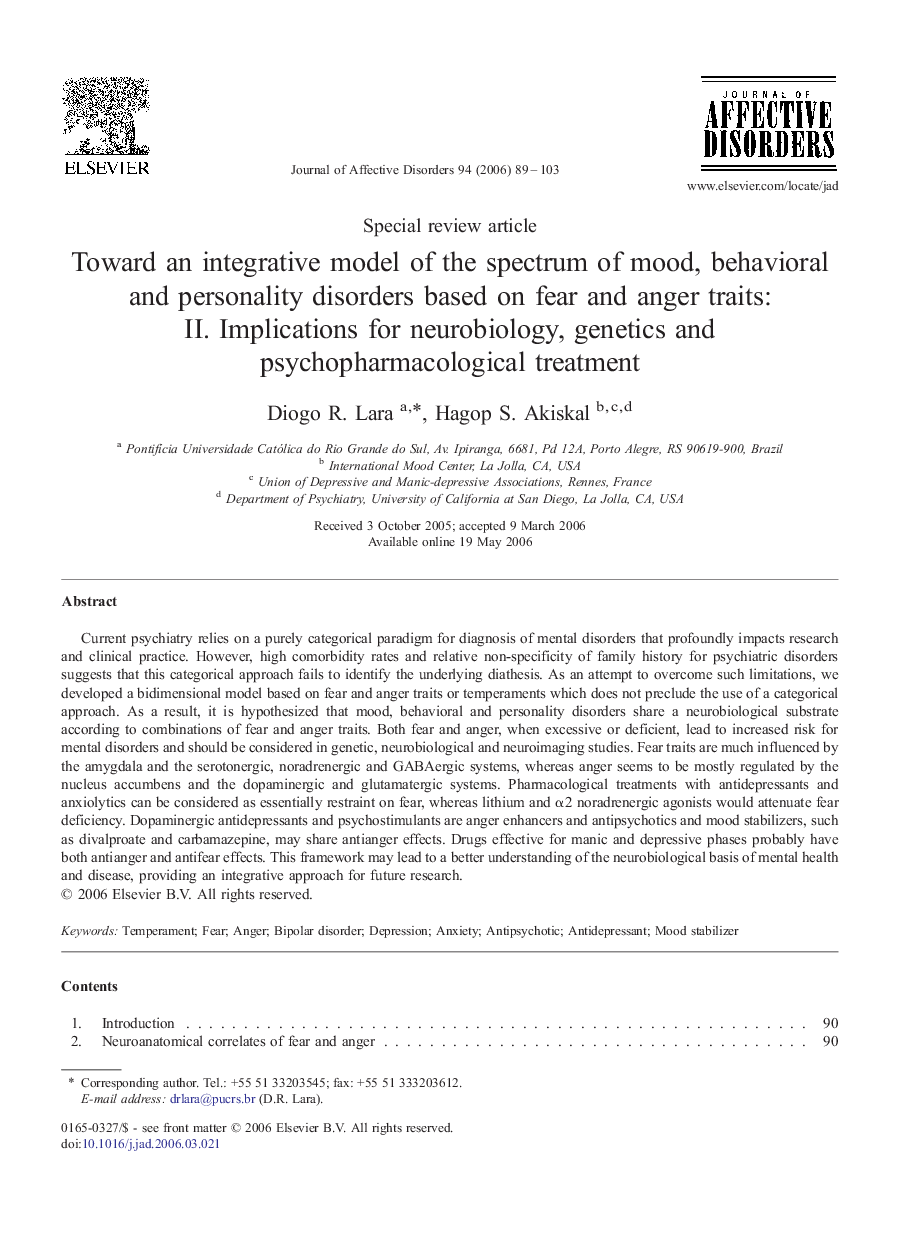| Article ID | Journal | Published Year | Pages | File Type |
|---|---|---|---|---|
| 4187915 | Journal of Affective Disorders | 2006 | 15 Pages |
Current psychiatry relies on a purely categorical paradigm for diagnosis of mental disorders that profoundly impacts research and clinical practice. However, high comorbidity rates and relative non-specificity of family history for psychiatric disorders suggests that this categorical approach fails to identify the underlying diathesis. As an attempt to overcome such limitations, we developed a bidimensional model based on fear and anger traits or temperaments which does not preclude the use of a categorical approach. As a result, it is hypothesized that mood, behavioral and personality disorders share a neurobiological substrate according to combinations of fear and anger traits. Both fear and anger, when excessive or deficient, lead to increased risk for mental disorders and should be considered in genetic, neurobiological and neuroimaging studies. Fear traits are much influenced by the amygdala and the serotonergic, noradrenergic and GABAergic systems, whereas anger seems to be mostly regulated by the nucleus accumbens and the dopaminergic and glutamatergic systems. Pharmacological treatments with antidepressants and anxiolytics can be considered as essentially restraint on fear, whereas lithium and α2 noradrenergic agonists would attenuate fear deficiency. Dopaminergic antidepressants and psychostimulants are anger enhancers and antipsychotics and mood stabilizers, such as divalproate and carbamazepine, may share antianger effects. Drugs effective for manic and depressive phases probably have both antianger and antifear effects. This framework may lead to a better understanding of the neurobiological basis of mental health and disease, providing an integrative approach for future research.
